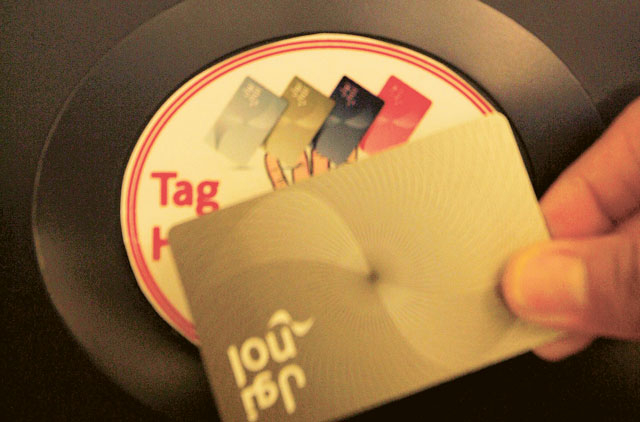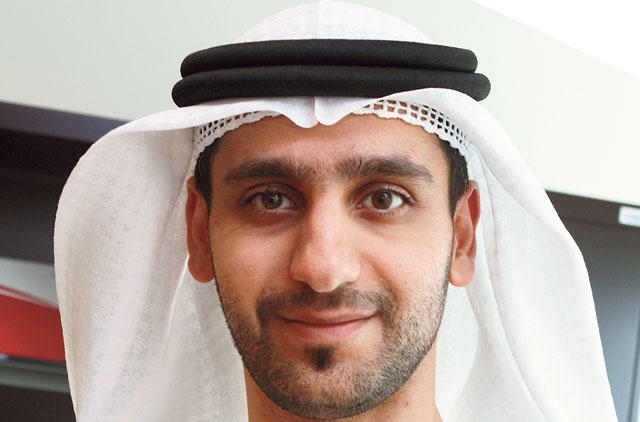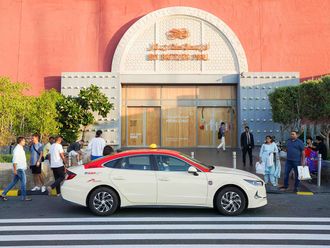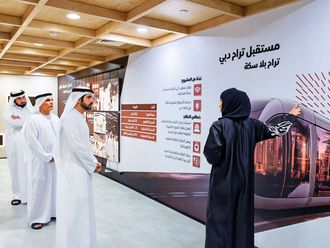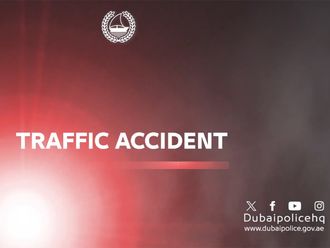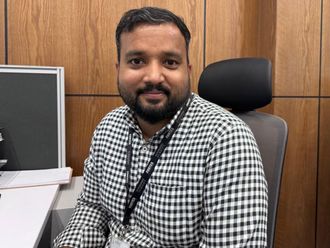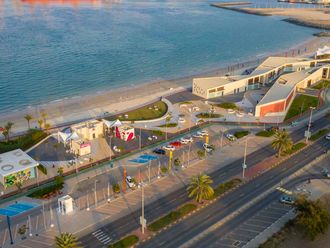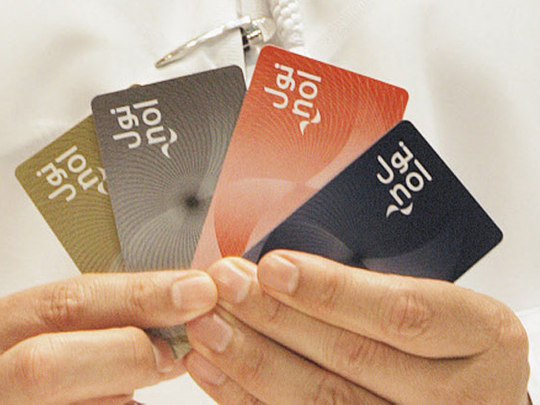
Dubai: The Dubai public transportation Nol cards will be good for buying grocery items and for payment of shopping from different outlets in the emirate.
Before the end of the year, Nol cards, which are now used for public transportation, will be enabled to function as an e-wallet that will allow people to use them at groceries, Mohammad Yousuf Al Mudharreb, director, Unified Automated Fare Collection Department, said in an exclusive interview.
RTA is already in talks with prominent grocery and supermarket chains to seek their participation.
Unlike credit cards and debit cards, where customers have to wait in queues and sign slips, the touch-and-go technology used in Nol cards means customers can just scan and leave, similar to the way they exit Metro stations, Al Mudharreb said.
Maximum recharge
The cards can be recharged the same way as is done now. And the maximum recharge will continue to be Dh500.
Residents will not have to buy new cards but simply use their existing card after ensuring it has sufficient funds.
As the sale of Nol cards has surpassed RTA's forecasts, the introduction of a micropayment option will invigorate use of Nol cards, officials hope.
"We want people to feel attached to their Nol cards. We want them to grow the habit of frequently using the cards. This will eventually encourage use of public transportation," he said.
"Besides this, the government has invested so much in developing the Nol cards system that we want it to be leveraged beyond the scope of RTA services," he added.
Nol cards are used in over 1.2 million traffic transactions in the city every day.
With over 500 sales points that also offer top-up facilities, the new feature of Nol cards could become popular, officials anticipate.
Four million Nol cards have been sold by the RTA since it was first launched in August 2009, of which three million are active users (who frequently use the card within a span of two months).
Positive response
"Majority of the Nol card sales were recorded in the first two years. Now the market is saturated and the sales are going down a bit, although it has surpassed our forecasts," Al Mudharreb said.
"This led us to consider expanding the use of Nol cards beyond RTA services," he said.
The initial response from merchants has been very positive, he said.
"Merchants would prefer use of Nol cards because cash handling costs them money as they often employ cash management companies."
"And many credit card companies are not interested in these small amounts of money because it does not benefit them much," he said.
What is Nol?
The unified automated fare collection card (UAFC) has been named after an old Farsi word nol. "Nol" means "fare" or "cost of using transport". The word is not in common use these days.
Nol is similar to another Arabic word karwa — which is commonly used in Kuwaiti, Bahraini and Qatari dialects. Karwa means "fare" or "cost" of doing any service or certain job. In the past, nol was used to refer to fare or cost of using horse and donkey transportation.
Expanding the scope of Nol cards
Studies are under way to determine the feasibility of introducing use of Nol cards to pay for cab rides, Mohammad Yousuf Al Mudharreb, director, Unified Automated Fare Collection Department, said.
"This can be a bit challenging because only one taxi company is owned by RTA and the rest of the players in the market are private companies that function as franchisees," he noted.
But taxis are an important area for RTA, since it provides seamless transportation for customers, which is vital in helping Dubai achieve its long-term goal of 30 per cent public transport users by year 2030, from the current 10 per cent, he said.
RTA is also considering adopting a new technology that allows embedding Nol feature into mobile phones, which means passengers would not need the cards but instead use their mobile phones to scan across ticket counters.
The technology, called Near Field Communication technology, which comprises a set of standards for smartphones and similar devices to establish radio communication with each other by touching them together or bringing them into close proximity, is gaining popularity worldwide.
With the technology, smartphones can also be used to check the balance as well as top up.
Further, RTA officials are in talks with major companies who would like to offer transportation facility for their employees, by designing for them a customised Nol card. Al Mudharreb urged interested companies to come forward.
Since they were introduced, Nol cards have been improved constantly, he said. In February 2011, red tickets issued by RTA were integrated, so that red tickets issued from any outlet could be used for travelling on all public transport modes in the city.
Reduced fares for Blue Nol cards for students, the elderly and those with special needs were also introduced. Later, in August 2011, the zones were rearranged and two additional zones were introduced bringing the total to seven.
Zone-wise break-up
Dubai city has been divided into seven zones, and customers get charged based on the zones crossed. Short trips, less than 3 kilometres, are charged Dh1.8. Travelling across a single zone costs Dh2.3, two zones cost Dh4.1 and three or more zones cost Dh5.8. The charges are double for the gold cabin of the Metro.


